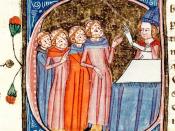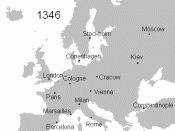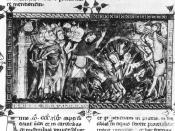The Fifteenth Century was a period of import in art, philosophy, political thought, and literature as the Renaissance developed power and altered the way man was viewed against the backdrop of the universe. Much of what began in the Fifteenth Century would flower in the Sixteenth Century. Many artists were born in the Fifteenth Century and would produce their great works in the Fifteenth and the Sixteenth centuries, having been shaped by the Fifteenth and the forces then developing. The century was a time of contrasts between the richest and the poorest.
Florence, in the fifteenth century, was a city state ruling Florence and much surrounding area. The peasants were not serfs but partly small proprietors, mostly tenant farmers, who lived in houses of crude cemented stone much as today, and chose their own village officials to govern them in local affairs. The magistrates of the cities regulated sales, and, to appease troublesome masses, kept food prices too low for peasant happiness.
Humanism and the Renaissance involved similar revivals of classical learning, an elevation of the individual, and a belief in the worth of human thought over authority, whether the latter be the authority of a political body or a church. The essence of humanism is found in the works produced during the Renaissance by writers, artists, and sculptors as they structured their works with humanistic values in mind. The development of humanism in the Renaissance involved a shift in how people thought, and this occurred at the same time that the horizons of the West were expanding, be they geographical, mental, social, economic, or political. There was a new focus on the individual, seen in political terms with a growing sense that individuality and government authority were at odds.
Yet, individuality was expressed in government in the form of...


